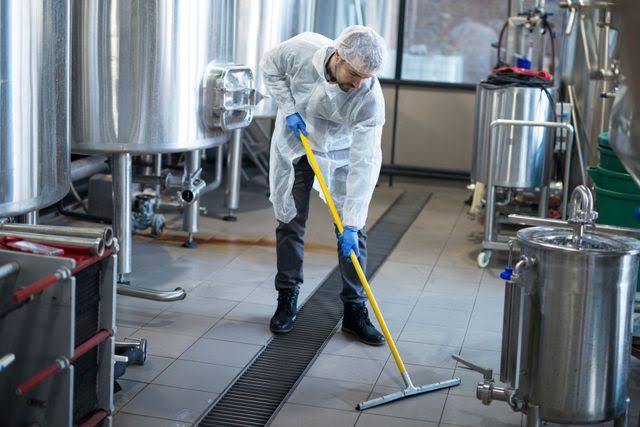Maintaining industrial machines isn’t just about oil changes and part replacements. Regular cleaning is crucial, yet often overlooked. A clean machine runs smoother, lasts longer, and is less prone to expensive breakdowns. This blog post aims to equip industrial maintenance teams and facility managers with effective cleaning strategies to keep machinery in top-notch condition.
Understanding the Challenges of Industrial Machine Cleaning
Industrial settings are breeding grounds for dirt and contaminants. These range from dust and grime to oils and other residues that can accumulate over time. Such contaminants can impede the efficiency of machines, leading to overheating, increased wear and tear, and ultimately, costly repairs or replacements.
Neglecting machine cleaning doesn’t only affect performance—it shortens the lifespan of equipment. Unchecked dirt build-up can cause blockages and corrosion, leading to premature failures. Regular cleaning can stave off these issues, ensuring machines remain in optimal working order for longer periods.
Recognizing these challenges is the first step toward implementing an effective cleaning regimen. Understanding what you’re up against makes it easier to choose the right solutions for your facility’s specific needs. An informed approach will save both time and resources in the long run.
Best Practices for Industrial Machine Cleaning
To achieve effective cleaning results, follow these best practices. Start with a general cleaning schedule that suits your facility’s operations. This plan should include regular inspections to identify areas requiring immediate attention, such as moving parts or ventilation slots.
Consider the specific needs of various types of equipment in your facility. For example, HVAC systems require regular filter changes and duct cleanings, while manufacturing machinery might need lubrication in addition to surface cleaning. Packaging machines often have components that require gentle handling during cleaning to avoid damage.
By tailoring cleaning practices to each machine’s requirements, you ensure thoroughness and safety. Consistency in following these practices fosters a clean environment, reducing the risk of unexpected machine failures and downtime.
Recommended Cleaning Solutions for Industrial Equipment
Choosing the right cleaning agents is vital for effective maintenance. Degreasers are commonly used for removing oily residues, while disinfectants help maintain hygienic standards, especially in food production environments. Select products that are specifically formulated for industrial applications to achieve the best results.
Sustainability is an important consideration when selecting cleaning solutions. Environmentally friendly options, such as biodegradable degreasers and plant-based disinfectants, offer effective cleaning power without compromising the health of workers or the planet. Incorporating these alternatives contributes to sustainable maintenance practices.
Manufacturers often supply recommendations for cleaning agents suitable for their machines. Following these guidelines ensures compatibility and prevents potential damage to sensitive components. Prioritize quality and effectiveness when integrating cleaning solutions into your maintenance routine.
Equipment-Specific Maintenance Tips
Different machines require different cleaning methods. HVAC systems benefit from regular vacuuming of vents and periodic cleaning of cooling coils. Manufacturing machines often need specialized brushes or air blowers to reach intricate parts without disassembly. Packaging equipment benefits from a combination of dry wiping and compressed air to remove debris.
Hard-to-reach areas present unique challenges. Using flexible extension tools, custom-made brushes, or dry ice blasting can help address these issues effectively. Cleanliness in these areas prevents the gradual build-up of contaminants that could lead to malfunctions.
Regularly review and update cleaning procedures to address any changes in equipment or production processes. This proactive approach ensures that all machinery receives the attention it needs, maintaining operational efficiency and productivity.
The Role of Technology in Industrial Cleaning
Innovative cleaning technologies are transforming industrial maintenance. Robotic cleaning systems, for example, provide precision and efficiency, reaching areas that are difficult for humans to access. These systems can reduce labor costs and improve cleaning consistency across large facilities.
Ultrasonic cleaning is another powerful tool, utilizing sound waves to remove dirt and grime from complex surfaces. This technology is ideal for delicate or intricate components, where traditional methods might be too abrasive or ineffective.
Adopting these technologies can streamline cleaning processes, enhance worker safety, and increase overall efficacy. Stay ahead of industry trends by exploring and integrating these advanced solutions into your maintenance strategy.
Conclusion
Regular cleaning is an integral part of maintaining industrial machinery. By understanding the challenges and adopting best practices, facility managers and maintenance teams can ensure their equipment remains in peak condition. Selecting the right cleaning solutions and leveraging innovative technologies further enhances these efforts.
Keep an eye for more news & updates on ChicagoHeading!

